MSI Graphics Card Update: Key Insights and Tips

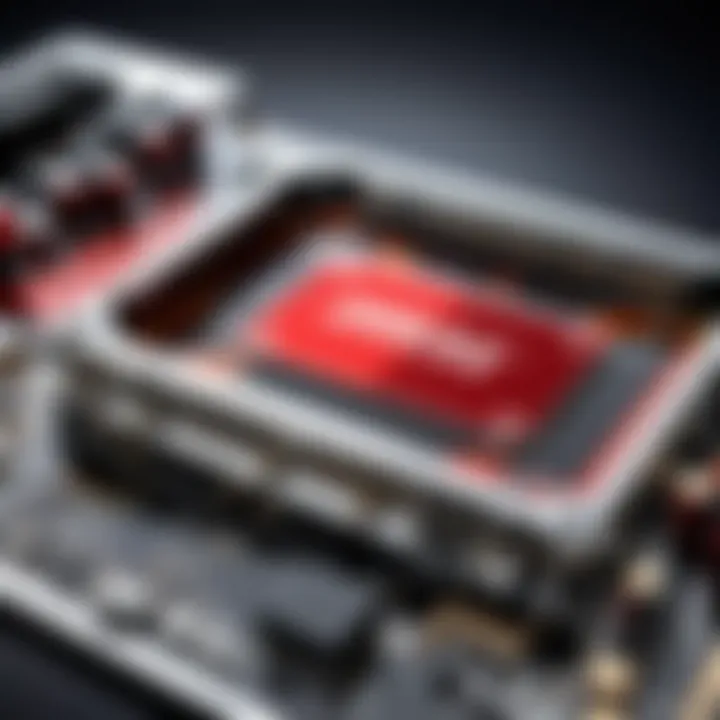
Intro
The world of graphics cards is often filled with complexities. One brand stands at the forefront of this technology: MSI. Regular updates to MSI graphics cards can profoundly influence performance and user experience. This article aims to distill the most pertinent information about these updates. It will illuminate the importance of maintaining updated drivers, the methods to implement these updates, and the possible technical issues that may arise in the process.
Understanding enhancements made through updates can lead to better performance in gaming and graphical applications. For both novice and experienced users, knowing how to navigate updates is essential for maximizing the capabilities of their hardware. This discourse will include sections on technology specifications, build quality, and best practices. Let’s begin by detailing the core technology of MSI graphics cards.
Prologue to MSI Graphics Cards
MSI Graphics Cards have carved a niche in the ever-evolving landscape of computer hardware. They are particularly renowned for their blend of performance, reliability, and cutting-edge technology. The significance of understanding these products goes beyond mere brand recognition. For serious gamers and professionals alike, the choice of graphics card can be the difference between subpar visuals and an immersive experience.
When you consider an upgrade or a new build, MSI's product line is worth examining closely. Graphics card updates, in particular, hold notable importance. Regular updates ensure that users can benefit from the latest improvements, optimizations, and security fixes. The relevance of these updates can extend far beyond specs; they can drastically enhance gaming experiences and professional tasks, transforming a good system into a great one.
Moreover, understanding the ins and outs of MSI graphics cards creates awareness on compatibility issues, installation procedures, and best practices. Whether you are a novice or an experienced user, a grasp of these details helps in making informed decisions, ensuring that performance is not compromised. Through this article, readers will explore the essential aspects of updates, their related benefits, and maintenance tips that can extend the life and performance of their graphics cards.
Overview of MSI's Product Line
MSI offers a diverse range of graphics cards, catering to various types of users. From entry-level models like the MSI GeForce GTX 1650, suitable for casual gaming, to high-end options such as the MSI GeForce RTX 3080, designed for intensive gaming and professional graphic work, there is a model for every need.
The line is characterized by distinct features such as proprietary cooling systems, RGB lighting, and factory overclocking capabilities. MSI's Ventus, Gaming, and Suprim editions each target different segments, ensuring that users can find the right balance of performance, temperatures, and aesthetics.
Each series is engineered with specific use cases in mind, which means understanding these lines can greatly influence a customer's choice. The graphics card you select will directly affect not just your performance in games, but also your system's overall efficiency.
Significance of Graphics Card Updates
Graphics card updates play a pivotal role in ensuring optimal performance. Firstly, they often contain performance enhancements that can unlock additional processing power and efficiency, especially when newer games or software are released. A timely update can mean the difference between achieving smooth frame rates or experiencing lag.
Secondly, updates frequently come with security patches. As cyber threats become more sophisticated, having the latest updates can shield your system from potential vulnerabilities, fortifying it against attacks.
Lastly, compatibility is another critical factor. As software evolves, the requirements for graphics processing can change. Regular updates help maintain compatibility between your graphics card and new applications or games. This ongoing support is vital for any user wishing to utilize their hardware effectively.
Regularly updating your graphics card can greatly enhance your gaming experience by improving performance and ensuring compatibility with the latest software.
Understanding the Update Process
The update process for MSI graphics cards is a critical component in maintaining optimal performance and ensuring compatibility with the latest software. As technology evolves rapidly, manufacturers regularly release updates to address issues, improve performance, and enhance security. Understanding this process allows users to make the most of their graphics card investment. It begins with identifying the current driver version and checking for available updates. This knowledge is crucial, as running outdated drivers can lead to incompatibilities, performance drops, and diminished visual quality in applications and games.
Identifying the Current Driver Version
To begin the update process, it is essential to identify the current driver version of your MSI graphics card. This step establishes a baseline for determining whether an update is necessary. You can find the current driver version through several methods:
- Using Device Manager: Right-click on the Windows Start button, select Device Manager, and navigate to Display adapters. Right-click on your MSI graphics card and select Properties. Under the Driver tab, the version number is visible.
- MSI Afterburner: If you have MSI Afterburner installed, open the application. The main interface typically displays the installed driver version.
- Command Prompt: Open Command Prompt and type . Press Enter, and the DirectX Diagnostic Tool will load. You can find the driver version under the Display tab.
It's also wise to keep a record of your current version, as this might help in troubleshooting any problems after an update.
Checking for Available Updates
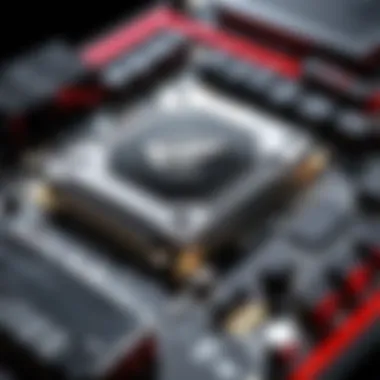
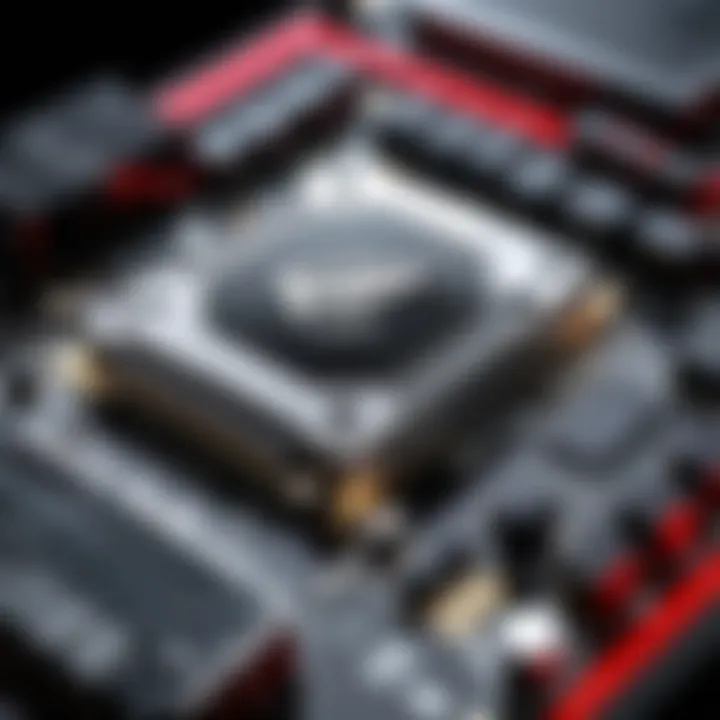
Once you identify your current driver version, you must check for available updates from MSI. MSI routinely releases driver updates to improve functionality and user experience. Follow these steps:
- Visit the MSI Website: Head over to the official MSI support page. Here, you can find specific drivers for your graphics card model.
- Select Your Graphics Card Model: In the search bar, input your specific MSI graphics card model. Ensure you select the correct model, as different models require distinct drivers.
- Compare Versions: On the driver download page, compare the latest driver version with your current version. If the latest version is newer, it’s time for an update.
Remote checking through MSI's official resources ensures you have the most recent updates directly from the manufacturer.
Downloading the Update Package
Once you have confirmed the existence of an update, the next step is downloading the update package. Here's how you can safely and efficiently do this:
- Navigate to Download Section: On the MSI support page for your graphics card, find the download section.
- Select the Driver: Choose the correct driver version that is compatible with your operating system (e.g., Windows 10, Windows 11).
- Download the File: Click on the download button to save the update package to your system. Ensure you download from the official MSI site to avoid malicious software.
- Check File Size and Integrity: Verify the file size and check for additional documentation, such as release notes, which may provide valuable information about the update's benefits and changes.
Downloading the correct package sets the stage for a smooth installation process and ensures your graphics card runs at its best.
Installation Procedures
The installation process of an MSI graphics card update is critical for ensuring optimal functionality and performance. Proper updates can enhance graphics rendering, fix bugs, and provide support for newer software. As graphics technology evolves, it is essential that users follow systematic procedures for updates to avoid any compatibility issues or system malfunctions. Effective installation can help ensure that users maximize their hardware capabilities and enhance their overall computing experience.
Preparing Your System for Installation
Preparation is a key aspect before any installation. Here are a few essential steps to take:
- Close All Running Applications: Ensure that no applications are running in the background that could interfere with the installation process.
- Create a Restore Point: This allows you to revert your system to a previous state if something goes wrong during the update.
- Check System Requirements: Confirm that the new driver aligns with your existing hardware and operating system specifications. Currently supported versions can be found on the MSI official website.
- Backup Important Data: It’s always smart to backup your data before making significant changes to your system. This can prevent data loss if an unexpected problem arises during installation.
Adopting these preparatory steps not only minimizes risk but also ensures a smoother installation experience.
Steps for Installing the Update
Once preparation is complete, you can proceed with the actual installation. Follow these steps for a systematic approach:
- Download the Driver: Navigate to the MSI support page and select the correct model of your graphics card. Download the latest driver suited for your operating system.
- Uninstall Previous Driver (if necessary): Sometimes, it is advisable to remove the old driver. This can be done via the Device Manager or uninstallation tools.
- Run the Installer: Locate the downloaded file. Right-click and select "Run as Administrator". This ensures proper permissions for the installation.
- Follow On-Screen Instructions: The installer will guide you through the installation process. Make sure to choose the appropriate options aligned with your preferences and requirements.
- Restart Your Computer: After installation completes, a restart is often required for the changes to take effect.
Be attentive to any prompts during installation and ensure that all necessary components are selected.
Verifying Successful Installation
Verification after installation is just as important as the installation itself. To confirm a successful update, follow these steps:
- Open Device Manager: Search for Device Manager in your start menu. Locate your MSI graphics card under the Display adapters section.
- Check the Driver Version: Right-click on the MSI graphics card and select Properties. Under the Driver section, you can see the installed driver version, comparing it with the version you intended to install.
- Run Benchmark Tests: Utilize benchmarking tools such as 3DMark or MSI Afterburner to test the performance of your graphics card post-update. Check for any significant improvements.
"Verifying the installation ensures that your system is optimized for peak performance and can run new applications efficiently."
By following these steps, users can ensure their MSI graphics cards are consistently updated and functioning at their best.
Benefits of Regular Updates
Regular updates for MSI graphics cards are crucial for maintaining optimal performance and longevity. These updates deliver enhancements that can improve overall user experience, fix security vulnerabilities, and ensure compatibility with the latest software applications. Users who neglect this aspect might experience issues that could have been avoided with timely updates. Therefore, understanding the benefits of regular updates becomes paramount for anyone using MSI graphics cards.
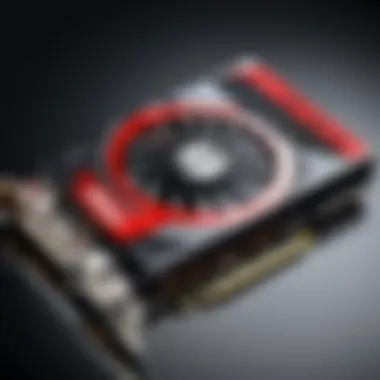
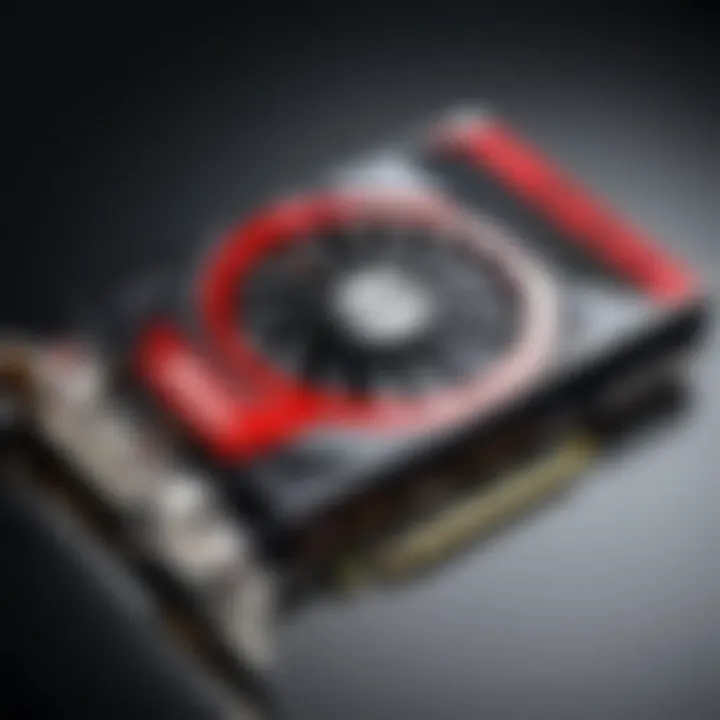
Performance Enhancements
One of the primary motives behind updating drivers is to achieve performance enhancements. The graphics card industry is continuously evolving, with game developers and software engineers pushing the limits of what hardware can do. Updates often include improved algorithms and optimizations that boost frame rates, reduce latency, and enhance rendering quality.
For instance, a new driver update may address specific problems for a game title, allowing for smoother gameplay. It can optimize how the GPU handles computational tasks, making overall operations more efficient. Users may find that their games run better, and they experience fewer crashes. It’s essential to keep in mind that even minor updates can lead to noticeable improvements.
Moreover, enhancements can extend beyond gaming. Applications for video editing, graphic design, and 3D modeling also benefit from the improved performance that new drivers provide. Keeping the graphics card updated can lead to a more productive workflow.
Security Improvements
In an era where digital security threats are high, keeping your system secure should be a priority. MSI recognizes this, often addressing security vulnerabilities within their update patches. Updating your graphics drivers helps protect your system against exploits that could potentially be used by malicious software.
Security updates often include fixes for potential security loopholes that hackers could exploit. A compromised graphics driver could lead not only to decreased performance but may also expose sensitive data. Therefore, having the latest updates ensures that your system has the protection needed against emerging threats. By staying updated, users reinforce their defenses against risks, fostering a safer computing environment.
Compatibility with New Software
Software developers continually release new applications, tools, and games that utilize the latest technologies. Regular updates for MSI graphics cards are designed to ensure compatibility with these new releases. Without updates, users may experience crashes, graphical artifacts, or may not be able to run a program at all.
Many new features in software might require support from the latest hardware specifications. Graphics cards that are consistently updated are more likely to handle these new requirements satisfactorily. It allows users to leverage new technologies such as real-time ray tracing or advanced AI algorithms, thus enhancing the gaming or software experience.
Furthermore, keeping graphics drivers current helps in maintaining stability with operating systems. Any major updates in Windows or other platforms can often break compatibility with older drivers. Therefore, timely updates mitigate disruption in your workflow or gaming sessions, allowing users to enjoy a seamless experience.
Staying ahead in the tech industry means adopting best practices. Updating your graphics card is not just a recommendation; it is a necessity for anyone serious about technology.Please ensure that these updates are part of your maintenance routine.
Common Issues and Troubleshooting
Understanding common issues after updating MSI graphics cards is essential for maintaining optimal performance and reliability. Even after a successful update, users may encounter problems that can affect usability. Addressing these concerns promptly can prevent further complications and ensure that users get the most from their hardware. It also reinforces the importance of regular maintenance and vigilance in the technological sphere, especially for those who rely on their systems for gaming, design, or content creation.
Identifying Common Post-Update Problems
After updating the graphics card, some users may experience various issues. These may include screen flickering, crashes, or irregular performance levels. It is crucial to recognize these problems quickly. The first step is to monitor system behavior closely after an update. Here are some signs to look for:
- Screen flickering or tearing. This often indicates a driver issue.
- Application crashes or freezing. Could suggest compatibility problems between the software and the new driver.
- Low frame rates or lag in games. Sign of potential conflicts regarding system optimization following the update.
Diagnosing the specific issue is important, as it will dictate the next steps for resolution.
Fixing Graphic Glitches
Graphic glitches can be frustrating and distract from your experience. To address these, first ensure that your drivers are fully compatible with your existing software. In some cases, rolling back to a previous driver version may solve the problem. Below are steps to help fix these issues:
- Disable Hardware Acceleration: Some programs allow users to alter settings that utilize hardware acceleration. Disabling this option can often lead to improved stability.
- Adjust Resolution Settings: Sometimes changing the display resolution or refresh rate can alleviate graphical issues.
- Reinstall Drivers: If problems persist, a clean installation of the graphics driver can help remove conflicts created during the update.
Addressing Performance Drops
Users might notice performance drops after an update, which can be especially concerning for gamers. A few common solutions can help reclaim lost performance:
- Check Power Settings: Ensure that your power settings are optimized for performance rather than energy saving, as this can affect graphics output.
- Clean Installation of Updates: Rather than just updating, performing a clean install of the graphics driver can eliminate any residual files from older versions.
- Update Related Software: Keeping other software, such as the operating system and gaming platforms, updated ensures compatibility with the latest drivers.
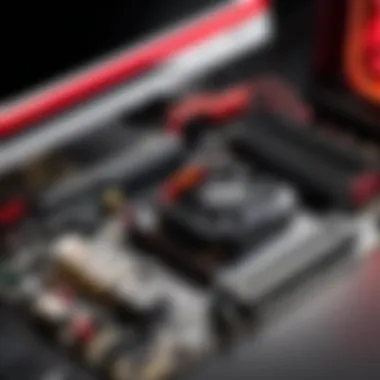
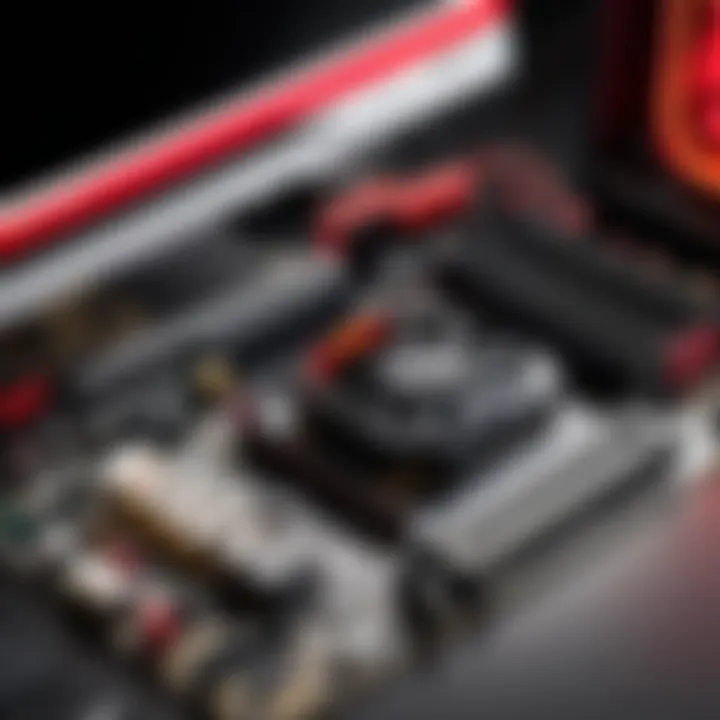
Regular maintenance is key. Always monitor your system’s performance after any updates to address issues quickly.
By staying informed and proactive about troubleshooting, users can enhance their experiences with MSI graphics cards significantly. This vigilance not only contributes to improved performance but also maximizes the longevity of the hardware.
Best Practices for MSI Graphics Card Maintenance
Maintaining your MSI graphics card involves a series of key activities that ensure it operates efficiently and effectively. Following best practices can not only prolong the lifespan of the card but also enhance its performance. Recognizing the crucial role your graphics card plays in your overall system performance, it becomes imperative to pay attention to these practices.
Regularly Monitoring Performance
Monitoring the performance of your MSI graphics card is fundamental for diagnosing potential issues and ensuring optimal functioning. By utilizing tools like MSI Afterburner or other performance monitoring software, you can keep track of key metrics such as temperature, clock speeds, and frame rates in real-time.
When the card operates under load, especially during gaming or graphic-intensive tasks, monitoring its temperature is essential to avoid thermal throttling or damage. Unusual dips in performance can signal underlying issues. Regular checks can prompt timely interventions to address them before they escalate into serious problems.
Optimizing System Settings
System settings play a significant role in how well your MSI graphics card functions. The right configurations can enhance performance and provide a better user experience. Start by ensuring that your Windows operating system is set for optimal performance mode. This setting can free up resources for your graphics card and improve efficiency.
In addition, adjust settings within popular graphic-intensive applications. Graphics settings in games or video editing software can often be modified to balance performance and visual quality.
Here are a few optimization strategies:
- Lower resolution settings in games for increased frame rates.
- Utilize in-game graphic settings to find a comfortable balance.
- Disable background applications that may consume resources unnecessarily.
By carefully tweaking these settings, the overall experience and performance of your graphics card can improve significantly.
Keeping Software Up to Date
Keeping software updated is vital in today's tech landscape. MSI frequently releases updates that could enhance compatibility, performance, and security of your graphics card. Therefore, regular checks for driver updates should be part of your maintenance routine.
Updating drivers can lead to substantial benefits such as improved performance in demanding applications or games and enhanced stability. Always check the MSI website or use software like MSI Dragon Center to monitor for updates.
Staying vigilant about software updates ensures that your graphics card operates with the latest improvements and fixes.
Moreover, keeping your operating system up to date can also impact the performance of your graphics card. New updates may come with optimizations that work synergistically with your hardware. Regular updates can prevent compatibility issues with newer applications or games as well.
By implementing these maintenance best practices, you can ensure your MSI graphics card runs optimally and remains a vital part of your computer system.
Closure
The conclusion serves as a critical aspect of this article, summarizing the essential insights gained throughout the examination of MSI graphics card updates. It is not merely an ending but a consolidation of knowledge that emphasizes several important elements of the update process.
A well-informed understanding of graphics card updates can significantly enhance user experience and operational capabilities. Among the benefits discussed are improved performance metrics, security features, and compatibility with newly released software. These aspects directly influence the efficiency of the graphics card and the overall system.
Summarizing Key Points
- Update Significance: Regular updates prevent obsolescence and ensure your system remains functional with the latest software developments.
- Support for New Features: Updates allow users to utilize new features and enhancements within applications and games, leading to an optimal interaction experience.
- Troubleshooting Resources: Knowing common issues and having well-defined procedures for fixes can save time and reduce frustration after an update.
In simple terms, consistently managing these updates will lead to a smoother and more secure computing environment.
Future Trends in Graphics Card Technology
The landscape of graphics card technology is evolving. With advancements in artificial intelligence and machine learning, future updates are likely to integrate smarter functionalities. We might see graphics cards that adapt to user preferences over time, providing tailored performance enhancements.
Additionally, the rise of cloud computing will affect how updates are delivered and implemented. Streaming graphics from remote servers will potentially minimize the reliance on hardware capabilities. This shift could redefine compatibility norms and user interactions with graphics technology. As applications become increasingly demanding, the ability to upgrade seamlessly will become a focal point in consumer choice.







